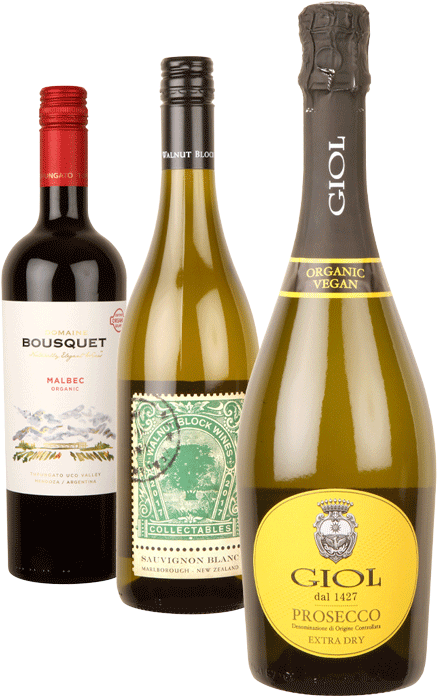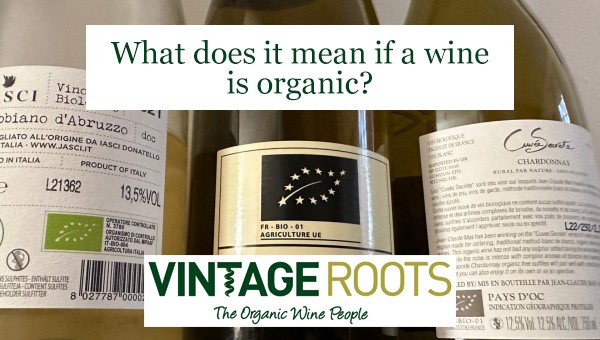Low Sulphur Wine: A Guide to Low Sulphite Wine
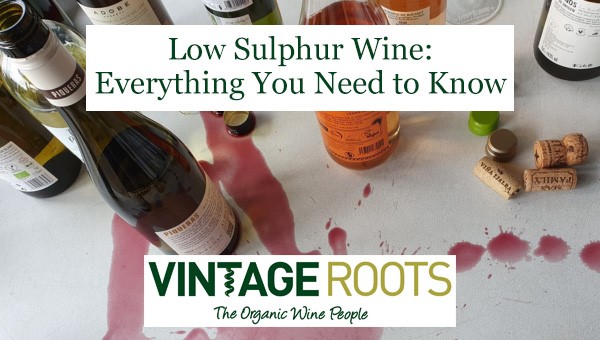
There is an awful lot of talk these days about ‘low sulphite wine’, ‘low sulphur wine’ and ‘no added sulphur wine’ too. As all our producers are organic and/or biodynamically certified, you can be confident that every wine we provide has had its levels of sulphur controlled and that the limits are less than those in conventional wines. For many this is very good news, but why, might you ask? What’s the big deal about sulphur and wine anyway?
Say sulphur and what comes to mind? The smell and its associations with prank cushions? The spring baths – and their healing properties – at Bath, Buxton and Harrogate? Perhaps your first thought was for the humble matchstick. Whatever sulphur means to you, the fact is the compound is a big part of our everyday lives and has been for thousands of years – even in the world of wine.
In this blog post, we’ll cover the following about low sulphur/low sulfur wine:
- A quick history of sulphite for winemaking
- Sulphur for winemaking today
- How much sulphites are in wines today?
- What’s so bad about sulphur and is any wine 100% sulphite free?
- Recommended low sulphite wines
- What to expect from low sulphur and no sulphur added wines
A quick history of sulphites in winemaking
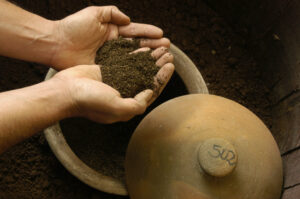
The ancient Roman and Greek civilisations were quick to discover sulphur’s qualities as a preservative. Sulphur was used to seal cracks in their amphorae. But when it was used for internal repairs, they soon discovered it was soluble (not so helpful!) and was, more importantly, stopping their precious wine from deteriorating into vinegar. There are documents from the first century AD that describe sulphur being burnt inside wine vessels to prevent oxidation. When we talk about oxidation in the negative sense it’s when the wine, exposed to air for too long, begins to turn brown and take on vinegary aromas.
Sulphur for winemaking today
If we skip on a few millennia to the twentieth century, the presence of sulphur in wine production is widespread. It’s being used to kill off unwanted bacteria and yeasts and to prevent premature oxidation. Wine producers have realised that grape skins, split and torn in rough harvesting, can be temporarily ‘band-aided’ with a sprinkling of SO2. Barrels and wineries are regularly cleaned with it and frequently, come bottling, a dash more sulphur is added for stability and enduring freshness. At this point in time you might well have come across a wine that contains 400 mg/litre of sulphur.
Low sulphite & low sulphur wine: How much sulphites are in wines today?
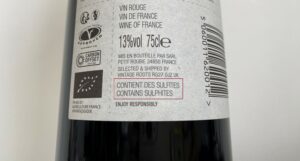
An unlucky wine drinker in the 1960s might have hit on a bottle that had 500 mg/litre of sulphur in it, but by the 1990s the EU had stepped in and restricted permitted levels to half that. Today the legal limit they’ve set is 150 mg/litre for dry red wines and 250 mg/litre for white and rosé wines. Better still, organic wine drinkers are exposed to less sulphur because their limits are up to 120mg/litre for dry reds and 170mg/litre for white and rosé. Some conventional sweet wines are permitted to have up to 400mg/litre, though the average tends towards 220mg/litre. This is because sulphur combines with the sugar first before the remaining ‘free’ sulphur can do its job. If the total SO2 in a bottle of wine exceeds 10 parts per million, then EU law dictates that “contains sulphites” must appear on the bottle. You can find out more about sulphur levels in both conventional and organic wines via this report by IFOAM here (see the table on page 19).
Low sulphite & low sulphur wine: What’s so bad about sulphur and is any wine 100% sulphite free?
Sulphur in winemaking does perhaps get more of a bad reputation than it should. While it isn’t necessarily dangerous, some individuals do experience unpleasant reactions to sulphur in food and drink products, and for this reason certain products in the UK/EU have to be labelled with ‘contains sulphites’. Sulphur has been helpful to winemakers for making consistent and reliable wines. Nonetheless, widespread use of sulphur products in convenience foods, canned foods and dried fruit has seen a rise in sensitivity to sulphur and so it’s important we know how to reduce our exposure to it if we can. As an aside, there is typically more SO2 in one dried apricot than in a glass of wine, but you can find out more about the dangers of sulphites in wine for some individuals in another one of our blog posts about sulphites in wine here.
There are those that will tell you sulphur in wine is the cause of many a wine headache. We don’t doubt you – sulphur sensitivity is a real thing. So too is alcohol and if you drink too much of it, no sulphur added/low sulphur or not, a headache may well follow!
Is any wine sulphite free? The short answer is no, as sulphur is a natural by-product of the fermentation process. This means a teeny tiny amount of it is produced naturally when wine is fermented (usually under 10ppm, which is ‘parts per million’ ). If the total SO2 in a bottle of wine exceeds 10 (yes ten) mg/litre, then EU law dictates that “contains sulphites” must appear on the bottle. You’ll usually find this on the back label.
Low sulphite & low sulphur wine: What wines should you drink to avoid sulphur?

There’s a few things you can do. Dry red wines have the lowest amount of sulphites/sulfites. The next thing would be to look for certified organic wines, as these have lower permitted sulphite limits (all of our wines are certified organic/biodynamic). The next next best thing would be to look for low sulphite or low sulphur wines specifically. These can be hard to find but we’ve been able to build up a good selection over the years. We classify our low sulphur wines as those where the winemakers use just 50% or less of the maximum allowed dosage for organic rules. And finally, some winemakers are also choosing to make wines with no added sulphites at all, so you could opt for both low sulphur or no added sulphur wines.
7 recommended and popular low sulphite/low sulphur wines
At Vintage Roots we want to make sure that our range of low sulphite wines and no added sulphur wines is the best on offer. Our selection covers over fifty low sulphur wines from top producers from all over the world. We have tasted our way through many, many wines and won’t sell anything that we wouldn’t be happy to drink ourselves.
Vina Ijalba Rioja Tempranillo is our best-selling Rioja, and its charm shows no sign of fading.
£11.50
L’Ecuyer de Couronneau Bordeaux Supérieur is a rare-find Bordeaux red of excellent quality.
£12.99
Generacion 73 Garnacha is an old-vine Grenache/Garnacha with a beguiling combination of delicacy and power.
£14.75
For a white, it’s impossible to resist the zippy freshness of Meinklang’s Gruner Veltliner.
£15.25
Walnut Block’s Nutcracker Marlborough Sauvignon Blanc is also an excellent choice, especially if you love New Zealand Sauv Blancs.
£16.25
Domaine Bousquet’s Rosé is an engaging, cherry-flavoured rosé with refreshing sweetness.
£12.95
El Troyano’s Orange Wine is a great introduction to orange wine and also made with no added sulphur.
£11.75
Low sulphite & low sulphur wine: Why are winemakers making low sulphite wines?
For some winemakers these reductions and limits don’t go far enough and they’re aiming for lower levels still or, more ambitiously, to add no added sulphur at all. For those with a sensitivity to sulphur and who suffer from headaches, rashes and nasty cold-like symptoms this is great news. Just as it is for asthma sufferers for whom sulphur can be positively dangerous.
Stellar Organics have been making a ‘No-Sulphur-Added (NSA)’ range of wines since 2004 and they acknowledge the effort and commitment it takes. “A lot of attention to detail in the vineyard and winery is required… regular monitoring of the no sulphur added wine is needed to keep them from oxidation. It’s important to start out with enough wine so that you are able to give sulphur to the wines that show any signs of oxidation,” says Winemaker Mauritius Naude. He adds, “Usually the NSA wines are the ones that have better colour and mouthfeel because sulphur has a bleaching effect on red wine.”
For other winemakers, the move to less sulphur is about maximising the wine’s individuality and authenticity. As beneficially cleansing as sulphur can be, it undoubtedly mutes a wine’s personality when used to excess.
When talking about their decision to stop adding sulphites to their wines, Italian organic winemakers Giol say that they “have enormous negative effects, which far exceed their benefits, including interfering with the genuine aroma and flavour of the wine and slowing down the maturation of the aromas and…. when we don’t use sulphites, our wines have a more authentic aroma and are more pleasing on the palate.”
Like Stellar Organics, Giol point out that there is an increased risk in making wines with no added sulphur and their decision to use screw cap closures is because they are more effective at preventing oxidation as well as being completely recyclable.
Santa Tresa in Sicily have made a no-added-sulphur Nero d’Avola which they describe as a challenge. “While our organic practices result in all our wines having a real purity of expression, we wanted to develop a Nero d’Avola which really is the essence of Sicily’s premium grape variety.”
It’s this drive to deliver highly-expressive and pure wines that is very much at the heart of reduced-sulphur use in winemaking. So-called ‘natural wines’ are also often made with no added sulphur or very low amounts. However, even though they’re growing steadily in popularity, ‘natural wine’ has no clear definition and no certifying body. For us, we are sticking with organic and biodynamic wines since they’re made with a verifiable certification process that’s identifiable and provable. You can view our natural organic wines here.
What to expect from low sulphur and no sulphur added wines

The low sulphite and no added sulphur wines we stock are very similar to regular wines. They may have a very slight spritz or fizz, which helps with preservation. When it comes to looking after your low sulphite wines, it’s also not much different than normal! They’re best kept in a cool spot and away from natural daylight. White wines can be kept for up to two years and reds for up to five, depending on the wine style. You can, if you choose, decant the red wines – no fancy gear required, just pour into a jug and then back into the bottle if you wish. And remember, don’t serve your red wines too warm, think slightly cool.
One of the characteristics of low sulphur and no sulphur added wines is that they will oxygenate more quickly than other wines and so it’s quite possible that the wine will change from one glass to the next – which is great fun!
Drinking no sulphur added and low sulphur wines is a rewarding choice. You will be drinking a carefully crafted wine that is the result of attentive vineyard management and eagle-eyed vinification. Often hugely expressive, low sulphur and no added sulphur wines give a less-interfered-with expression of the place the vines are grown and the individual grape varieties. Chances are, you will taste the wine’s story unfold further, glass by glass.
SHOP ALL LOW SULHUR ORGANIC WINES
Sign up for £5 off your first order here.
Subscribe to our newsletter to find out about special offers here.
![]()



